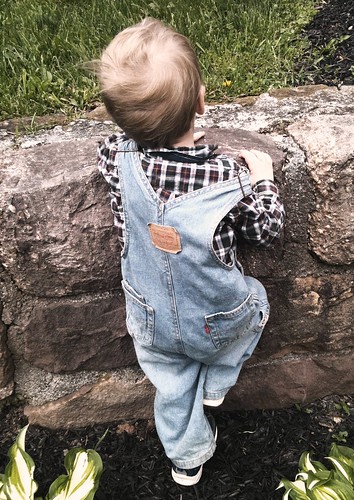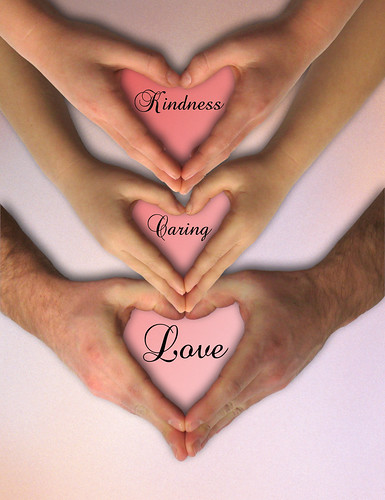Structure, expectations, predictability- all add up to responsibly raising and loving our children. The freedom we all feel deep within ourselves comes once we understand where we stand in the scheme of things.” Magda Gerber
From my mailbox:
“I am 23 years old and have a 3 year old daughter and a 3 month old son. I just recently began researching alternatives to corporal punishment and have come across so much information I am having a hard time sticking with one particular style. I’m trying to pick and choose what I feel is right but it seems that everything I have tried with my little girl isn’t doing much so I revert back to yelling and spanking and threatening corner time. It really really hurts me to treat her that way but that is how I was raised and I am having such a hard time breaking the cycle. Her most used lines are “I don’t want to.” “NO!” “I said NO!” Where do we begin?”
“I don’t know what to do when my son does something to hurt his little sister, like hitting, kicking, or grabbing a toy from her. When I see my son act like this, I feel angry at him, and protective towards the baby. I want him to learn to be kind and gentle with his sister, and I don’t understand where this behavior comes from. We are always gentle with him.”
“I’m a single Mom, and sometimes, my daughter just wears me out. I feel like I’m saying the same things again and again, and she just doesn’t hear or listen. After the tenth time of saying “No!” or asking her to do something, sometimes I just lose it and yell at her, especially at the end of a long day, when I’m tired too.”
“Mornings are the worst for me. It’s always such a busy time. I’m trying to get all of us dressed, fed, and out the door on time, with everything we need for the day, and that’s always the time my youngest chooses to have a meltdown, or cling to my leg. I try to stay calm, but it’s hard. He will be throwing his breakfast on the floor, refusing to get dressed, or chasing the poor dog and pulling her tail, and I just don’t feel like I have the time to deal with it calmly.”
“How do I deal with it when my daughter screams at the top of her lungs, no matter what I say or do?”
“My son is 18 months old and he loves to throw balls and play catch. The problem is he throws everything, and often at someone, and sometimes hurts them! How do I teach him (or can I, at his age) what’s appropriate to throw, and where?”
“I have trouble getting my son to look me in the eye when he’s bitten me or his father. And I’m speaking about when he bites for sport / play, not when he’s tired, overstimulated, etc. Traditionally, when he’s bitten us, I simply and neutrally state “No biting” or “I don’t want you to bite” and then move on so I don’t fuel the fire with attention. But over the past few months, this has stopped working. So, I’ve instead started kneeling at his level and tellling him gently that I don’t want him to bite me. It’s at these times that he’s squirmy, looks away, and deliberately avoids eye contact. Any ideas? Or is this the wrong technique? He’s 23 months, by the way.”

Does any of the above sound familiar? All of the toddlers in these examples are acting in completely normal and age appropriate ways, but their behavior can sometimes be perplexing and exasperating to the adults who love them, and it can be hard for parents to know how to respond. We want to help young children to learn to behave in socially positive ways. Young children need to trust we will respond with kindness, and help them to understand the limits and learn what behavior is expected and accepted. Recent research indicates that if we react with harshness, young children can’t learn anything at all. Young children feel safe and secure, and can cooperate more easily when adults calmly set clear, consistent and firm limits, when the “rules” don’t change, and when they are told what they can do instead of just hearing “No!”
Here are five easy steps to help you effectively (and calmly) set limits with your toddler:
1) Begin with empathy and trust. Assume your toddler is doing the best she can do in any given situation, and is not just trying to drive you crazy. Trust this: with your gentle guidance and some time, he can and will learn to act in more positive ways.
2) Next, observe or notice what is happening, and simply narrate or state what you see or hear.
“You hit your sister, and she is crying.” “You are throwing the sand.” “You are throwing your food.” “You are screaming.” “You are throwing your blocks.” “Ouch, you are biting me!”
3) Briefly explain why you want the behavior to stop.
“It hurts your sister when you hit her.” If you throw the sand it might get into someone’s eyes, and that hurts.” “Food is for eating. It makes a big mess when you throw your food, and I don’t like it.” “It hurts my ears when you scream,” or “I can’t understand you when you scream.” ” Blocks are hard and it might hurt someone if you throw blocks at them.” “Biting hurts.” Notice two things: Most of the time, you want or need to set a limit when your child’s actions might harm them or someone else. Also, it is perfectly acceptable to ask your child not to do something because you don’t like it- your feelings and needs matter. So if you find yourself getting upset because your child is making a big mess that you will have to clean up, or you just can’t bear to listen to another moment of screaming, say so! Sometimes just drawing attention to the behavior and the reason it is inappropriate is enough to stop the unwanted behavior (at least in the moment).
4) Set the limit, while demonstrating the desired behavior or offering an alternative, if possible.
“I won’t let you hit your sister. Please touch her gently.” ( Say this while stroking both children gently.) “If you want to hit, you can hit this doll (or the floor, or these pillows).” “Please keep the sand low in the sandbox” ( demonstrate). ” If you can’t remember to keep the sand low, I’m going to ask you to leave the sandbox.” When you throw your food, that tells me that you’re done eating. If you still want to eat, please keep your food on the table or I will put it away (or ask you to get down).” “Please don’t scream. I want to understand, and I can’t when you’re screaming. Can you show me (or, tell me using your regular voice) what you want?” or “If you want to scream, I will ask you to go in the other room (or outside).” “If you want to throw something (or play catch) let’s go find a ball. Balls are for throwing. If you keep throwing the blocks I will put them away for today.” “No biting!” ( Say this firmly, while putting your child down.) I will move away if you are going to bite me. If you want to bite, you may bite this teether.”
5) Follow through with the limits each and every time (consistency). This is very important.
When you set a limit your child may resist, or express some angry or sad feelings. This is perfectly natural, and fine. Accept, name and acknowledge your child’s feelings, but calmly hold firm to the limit. Your child is entitled to express and have her feelings heard, but that doesn’t mean you have to meet her anger with anger, agree with her, or give in to him.
Help your child if necessary. Stay nearby and supervise closely if your child is prone to hitting his sister. “You are having a hard time remembering to keep the sand low in the box, so I’m going to ask you to leave the sandbox now. Can you do it yourself, or would you like some help?” “You are still throwing your food. I’m going to put it away now.” (You can also hand your toddler a cloth and ask her to help you clean up the food that was dropped.) “You are still screaming. I’m going to ask you to go get all your screams out in the next room,” or “I can’t help you when you’re screaming.” “I’m going to put these hard toys away, and you can play with these balls and stuffed animals.” (In some cases, it may be necessary or helpful to make changes in your environment or routine that will make it easier for your child to remember and cooperate with the limits. For instance, it may be helpful to put away hard toys for awhile if your child is intent on throwing everything. Maybe providing a gated, safe play area for the baby will protect her from her brother when you can’t be right there to intervene. Maybe changes in the morning routine are needed to make it a less rushed, stressful time, or you can put aside some special toys that come out just in the morning for your toddler to play with.)
Remember, the attitude with which you approach your child and the tone of voice you use when setting a limit matters just as much as what you say. The goal is not to punish, but to teach. Children learn just as much (or more) from what we do, as they do from what we say. Magda Gerber always said, “What you teach is yourself.” What do you think she meant by that?


 In “Peaceful Babies—Contented Mothers,” pediatrician Dr. Emmi Pikler asks us to consider the importance of the touch of our hands.
In “Peaceful Babies—Contented Mothers,” pediatrician Dr. Emmi Pikler asks us to consider the importance of the touch of our hands.